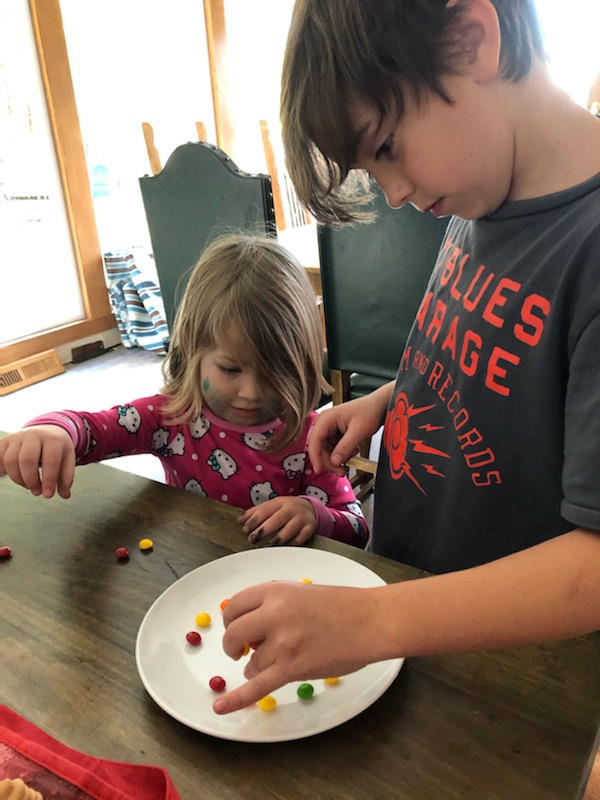Start by introducing this activity to your children. Depending on the age, you can work on different concepts. For your youngest children, you can do counting, colors, and very basic hypothesis. The older he child, the more you can ask of them. What do they think will happen? Why? What are some variables you can introduce? Things like that.
Then have your child arrange skittles in a round pattern on the edge of the plate. If you have a large enough plate, you can do a variation where you add a few in the middle as well.

